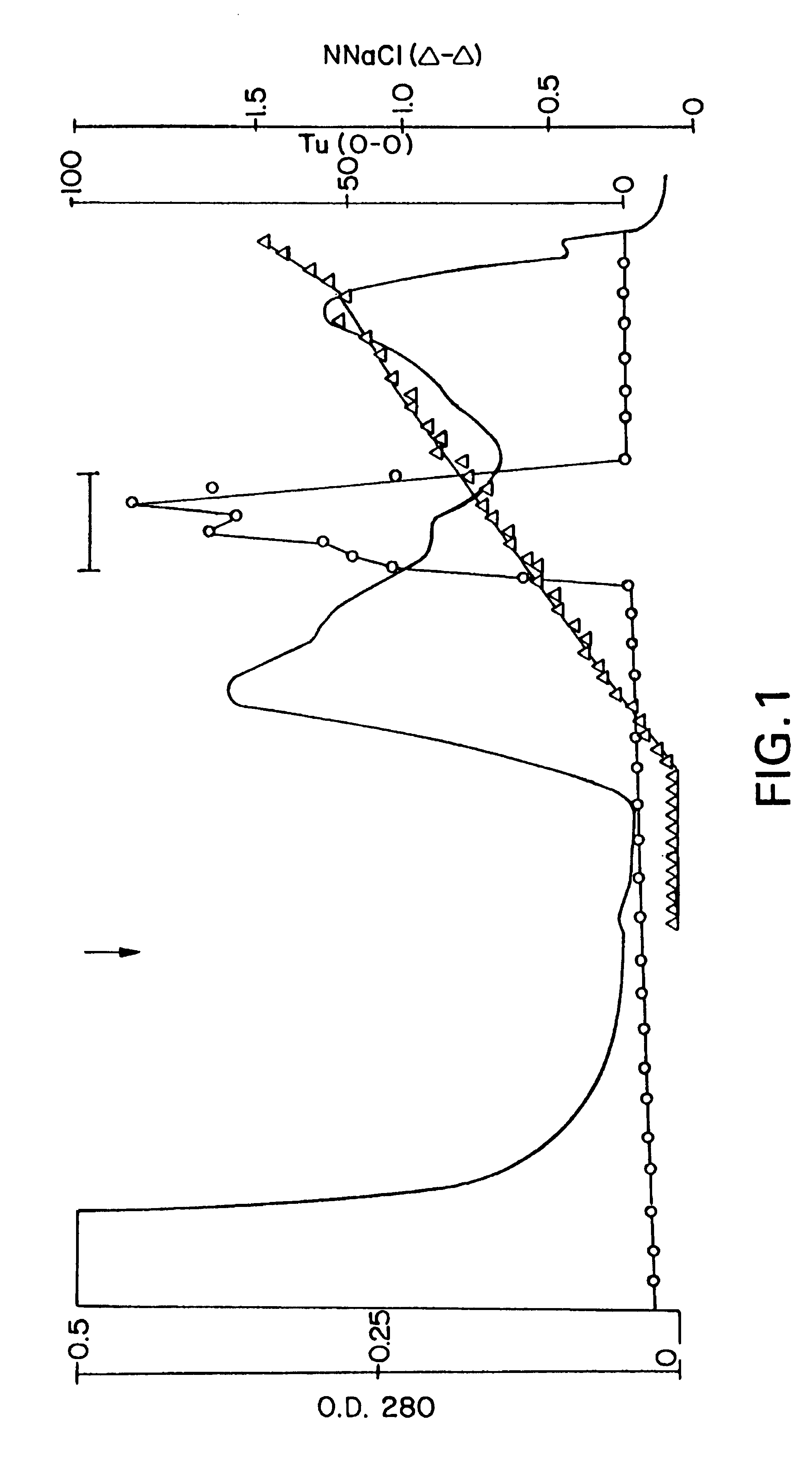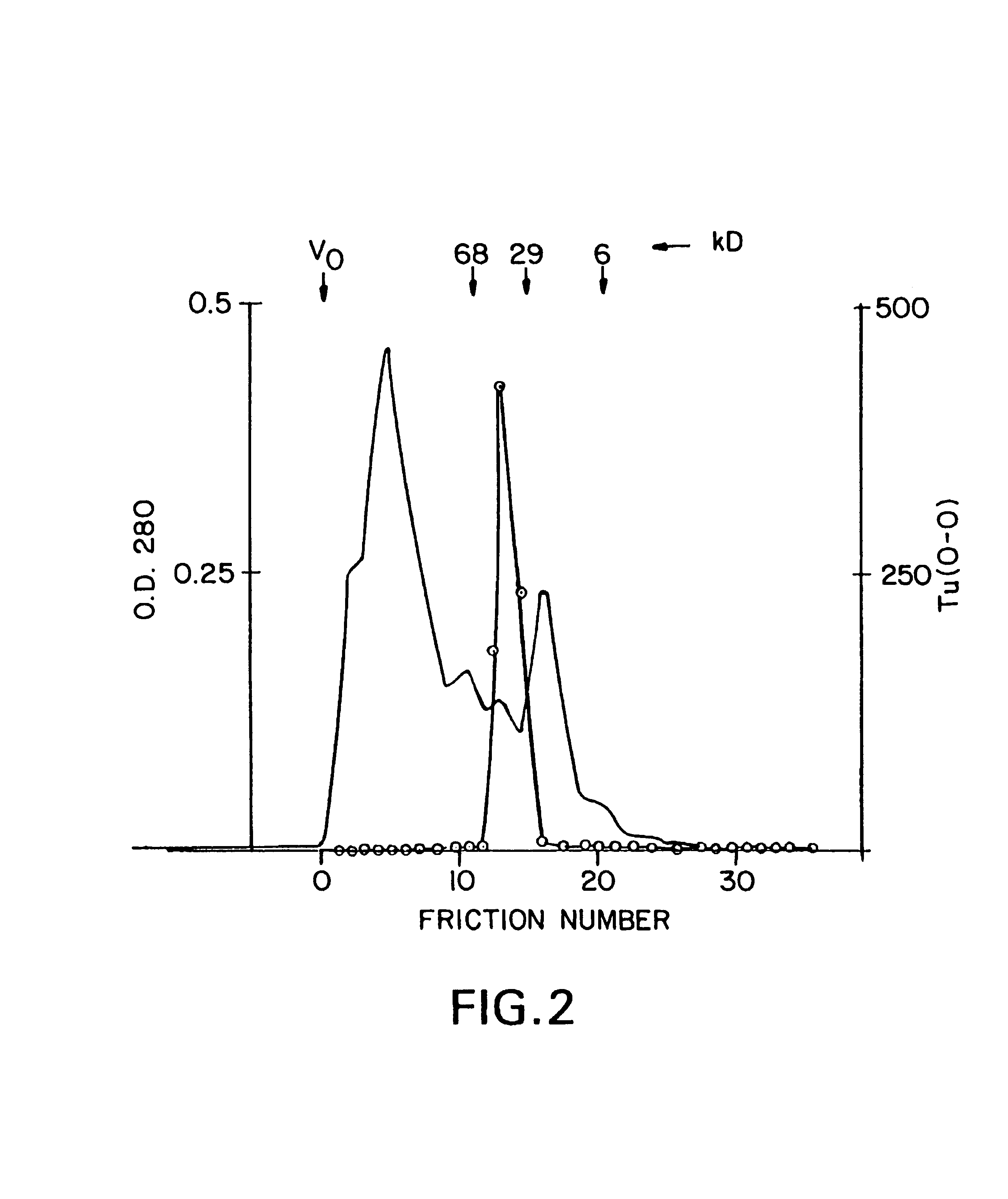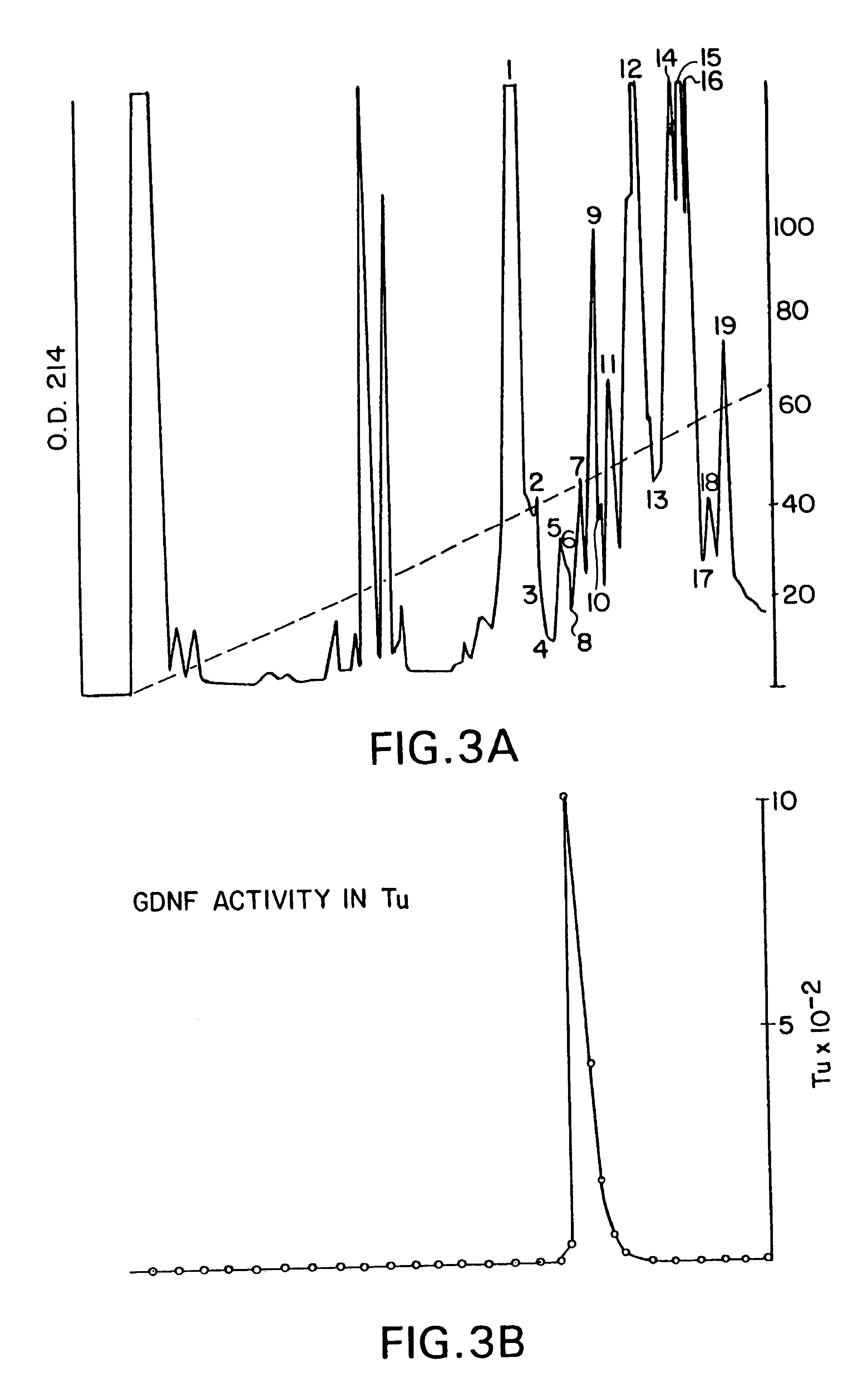Nucleic acids encoding glial cell line-derived neurotrophic factor (GDNF)
- Summary
- Abstract
- Description
- Claims
- Application Information
AI Technical Summary
Benefits of technology
Problems solved by technology
Method used
Image
Examples
example 1
Purification and Sequencing of GDNF
[0141]This example describes methods for the bioassay and purification of GDNF. It also describes methods for preparing the B49 cell line conditioned medium that is the starting material for purification. Methods for obtaining amino acid sequence of purified GDNF and partial amino acid sequences obtained from the purified protein are also described.
A. Materials. Timed pregnant rats were from Zivie Miller lab, Allison Park, Pa. Unless specified, all reagents were from Sigma Chemical Co., St. Louis, Mo.
B. Bioassay for Dopaminergic Neurotroghic Activities.
[0142]Culture conditions: Dissociated mesencephalic cell cultures were prepared as previously described (Friedman and Mytilineou 1987 Neurosci. Lett. 79:65-72), with minor modifications. Briefly, rostral mesencephalic tegmentum from brains of Sprague-Dawley rat embryos, at the 16th day of gestation, were dissected under the microscope in sterile conditions, collected in Ca2+- and Mg2+-free Dulbecco's...
example 2
A. Cloning of a cDNA Copy of the Rat Gene that Encodes GDNF.
[0163]In order to clone the gene encoding GDNF, a cDNA library was constructed from poly A+ RNA isolated from B49 cells, and this library was screened with a degenerate oligonucleotide probe based on the amino acid sequence obtained from purified GDNF. A cDNA clone that hybridized to this probe was determined, by DNA sequencing, to contain DNA sequences that are located 3′ to the sequences used in the degenerate oligonucleotide probe, that encoded an amino acid sequence present in GDNF and located carboxyterminal to the amino acid sequence upon which the screening oligo probe was based.
[0164]Culture conditions for the B49 cell line are described in detail in Example 1 above. For RNA preparation, cells were grown to near confluence in serum containing medium, washed once in serum-free medium (DMEM) and grown for 4 days in DMEM with one medium. change after 2 days. The cells were then harvested and...
example 3
Use of GDNF to Prevent Experimental Parkinsonism
[0192]This example describes methods for creating experimental Parkinsonism in monkeys by appropriate administration to the animals of the neurotoxin MPTP (1-methyl-4-phenyl-1,2,3,6 tetrahydro-pyridine). It also describes methods for administering GDNF to animals exposed to MPTP in order to alleviate the development of Parkinsonism in such animals.
[0193]A. Administration of GDNF in monkeys treated with MPTP to produce experimental Parkinsonism. A stainless-steel cannula may be implanted into the right lateral ventricle and connected to a subcutaneously-implanted osmotic minipump (Alzet 2002). The minipump contains GDNF at various concentrations or its diluent as a negative control. The pump delivers 0.5 μl / h for 14 days. Two days after the cannula-pump implant, monkeys (Cebus apella) receive an injection of 0.6 mg / kg of MPTP into the right carotid artery. Six weeks after the initial implant, animals are perfused with saline and the bra...
PUM
| Property | Measurement | Unit |
|---|---|---|
| Temperature | aaaaa | aaaaa |
| Temperature | aaaaa | aaaaa |
| Fraction | aaaaa | aaaaa |
Abstract
Description
Claims
Application Information
 Login to View More
Login to View More - R&D
- Intellectual Property
- Life Sciences
- Materials
- Tech Scout
- Unparalleled Data Quality
- Higher Quality Content
- 60% Fewer Hallucinations
Browse by: Latest US Patents, China's latest patents, Technical Efficacy Thesaurus, Application Domain, Technology Topic, Popular Technical Reports.
© 2025 PatSnap. All rights reserved.Legal|Privacy policy|Modern Slavery Act Transparency Statement|Sitemap|About US| Contact US: help@patsnap.com



